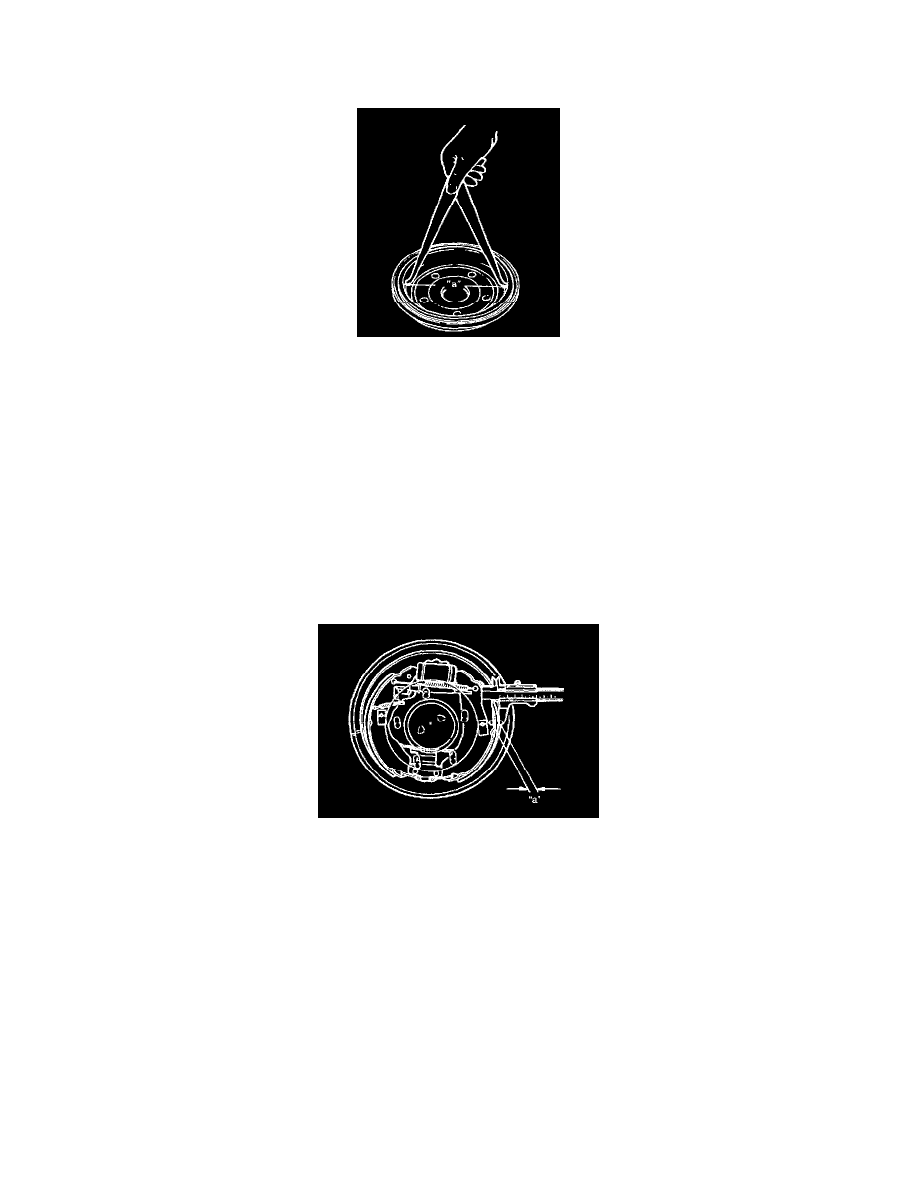Vitara 2WD V6-2.5L (2004)

Brake Drum: Testing and Inspection
Brake Drum
^
Inspect drum for cleanliness.
^
Check wear of its braking surface by measuring its inside diameter.
Brake drum inside diameter "a"
Standard: 220 mm (8.66 inch)
Limit: 222 mm (8.74 inch)
^
Whenever brake drums are removed, they should be thoroughly cleaned and inspected for cracks, scores, deep grooves.
Cracked, Scored, or Grooved Drum
A cracked, drum is unsafe for further service and must be replaced. Do not attempt to weld a cracked drum.
Smooth up any slight scores. Heavy or extensive scoring will cause excessive brake lining wear and it will probably be necessary to resurface drum
braking surface.
If brake linings are slightly worn and drum is grooved, drum should be polished with fine emery cloth but should no be turned.
NOTE: When drum is removed, visually inspect wheel cylinder for brake fluid leakage. Correct leaky point, if any.
Brake Shoe
Where lining is worn out beyond service limit, replace shoe. If one of brake linings is to service limit, all linings must be replaced at the same time.
Rear brake shoe thickness "a"
Standard: 6.5 mm (0.26 inch)
Limit: 3.0 mm (0.12 inch)
CAUTION: Never polish lining with sandpaper. If lining is polished with sandpaper, hard particles of sandpaper will be deposited in lining and may
damage drum. When it is required to correct lining, replace it with a new one.
